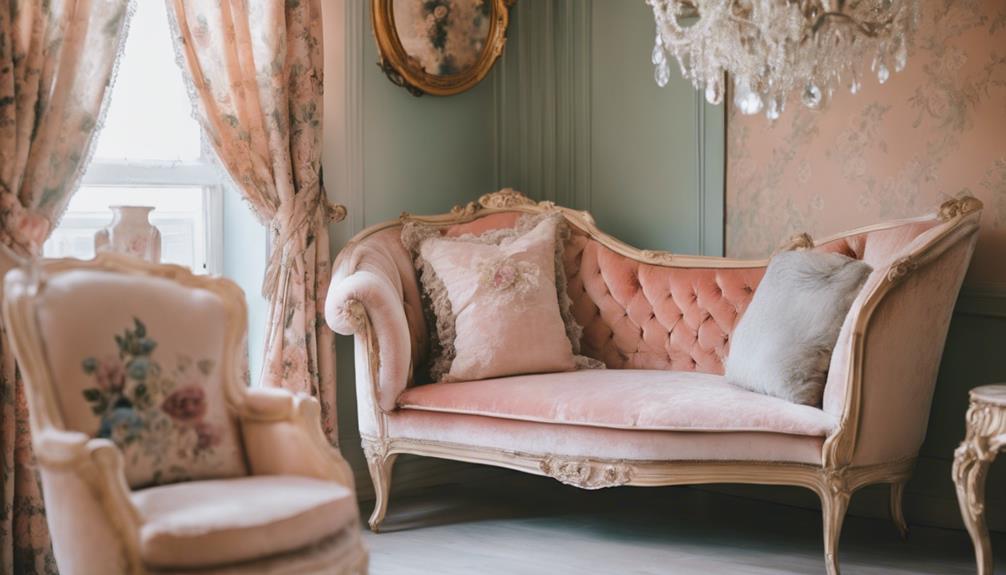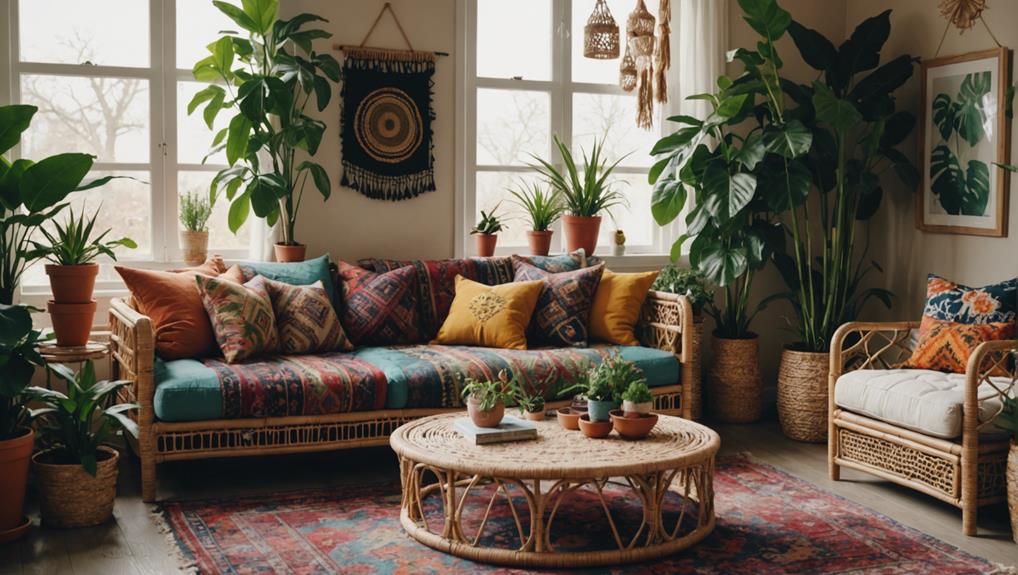Looking to add a festive touch to your holiday decor without breaking the bank? We have the perfect solution for you – DIY bamboo candy cane sticks! Not only are they incredibly easy to make, but they are also eco-friendly, making them a great choice for those who want to celebrate the holidays in a sustainable way.
With just a few supplies and some simple steps, you can create beautiful candy cane sticks that will impress your guests and add a touch of charm to your home. Whether you’re looking to decorate your Christmas tree, create a holiday centerpiece, or give handmade gifts to your loved ones, these DIY bamboo candy cane sticks are sure to delight.
But you may be wondering, why bamboo? Isn’t candy cane sticks usually made of plastic or wood? Well, that’s where this DIY project takes a unique and eco-conscious twist. By using bamboo, you’re opting for a sustainable and renewable material that is both sturdy and visually appealing. Plus, bamboo is known for its natural beauty and durability, making it the perfect choice for this holiday DIY project.
Key Takeaways:
- DIY bamboo candy cane sticks are a simple and budget-friendly way to add a festive touch to your holiday decor.
- Making your own candy cane sticks allows you to customize them according to your preferences and create unique holiday decorations.
- Bamboo is an eco-friendly material that adds a sustainable and natural element to your candy cane sticks.
- This DIY project is a fun and creative way to celebrate the holidays while being mindful of the environment.
- Stay tuned for the step-by-step guide on how to make your own bamboo candy cane sticks!
Supplies Needed
Creating your own bamboo candy cane sticks is a fun and easy DIY project that doesn’t require many supplies. Here’s what you’ll need to get started:
- A heat gun: This tool will be used to melt and shape the foam.
- A pool noodle: The foam from a pool noodle will serve as the base for your candy cane sticks.
- A razor blade: A sharp razor blade will be used to cut and shape the foam.
- Paint: Choose acrylic paint in the colors of your choice to give your candy cane sticks a festive look.
These supplies are readily available and affordable, making this DIY project accessible to anyone who wants to add a touch of holiday cheer to their decor.

Gather Your Supplies and Get Ready to Create
Before diving into the project, it’s important to gather all of the necessary supplies. This will ensure a smooth and uninterrupted crafting experience. Take the time to organize your work area and have all the materials within reach.
“Having all the right supplies at hand makes the DIY process much more enjoyable and efficient.” – Martha Stewart
Now that you have everything you need, let’s move on to the fun part – creating your DIY candy cane sticks!
| Supplies | Image |
|---|---|
| Heat Gun |  |
| Pool Noodle |  |
| Razor Blade | 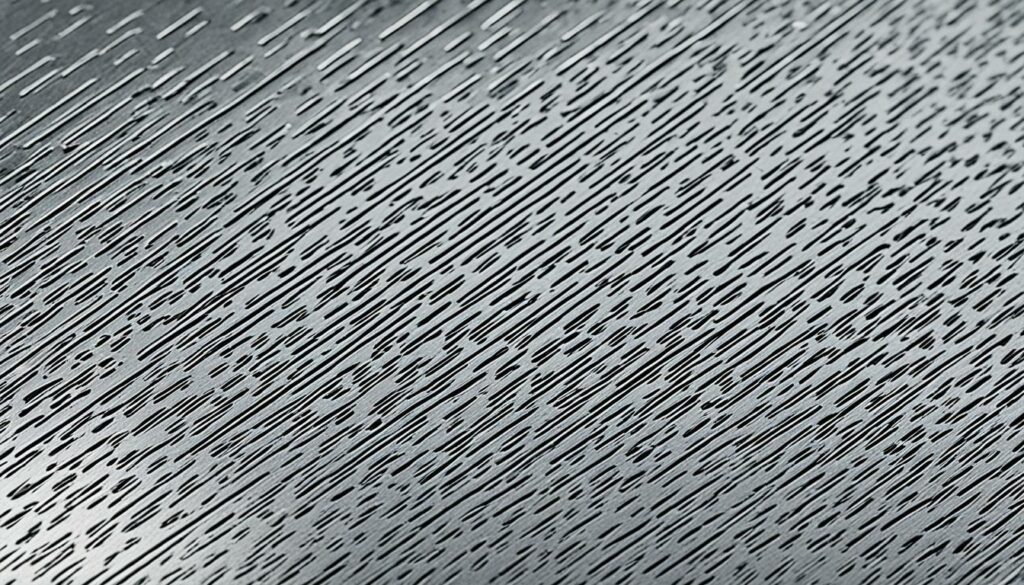 |
| Paint |  |
Step 1 – Cutting the Foam
The first step in creating bamboo candy cane sticks is to cut the foam. To get started, gather these supplies: a pool noodle, a heat gun, and a razor blade.
Begin by taking the pool noodle and making a slit around the circumference, about halfway through the foam. It’s important not to cut all the way through, as the intact side will serve as the base for your candy cane stick.
Using the heat gun, carefully melt the top layer of the foam along the slit you just made. This will create a ridge, which will act as the seam for your candy cane stick.
Next, use the heat gun to melt the foam in between the slices, giving it your desired texture. You can experiment with different levels of melting to achieve the look you want. Be cautious not to melt the foam too much, as it may lose its shape.

“Cutting the foam is an important step in creating the perfect bamboo candy cane sticks. Take your time and be precise to achieve the desired results.”
Step 2 – Painting
Now that we have cut the foam into candy cane shapes, it’s time to bring them to life with a vibrant paint job. Painting the candy cane sticks is where you can let your creativity shine and add your personal touch to this DIY project. Here’s how to make your candy cane sticks visually appealing and festive:
- Step 2.1: Painting the Seam
Start by painting the inside seam of the foam a dark brown color. This adds depth and definition to the candy cane sticks, mimicking the appearance of real bamboo. Use a small paintbrush to carefully apply the paint along the seam, ensuring full coverage.
Remember to let the paint dry completely before proceeding to the next step. Patience is key to achieving the best results.
- Step 2.2: Layering Colors
Once the seam paint is dry, it’s time to create the wood grain effect. Choose a lighter brown shade and brush it over the rest of the noodle. This lighter color will serve as the base for your wood grain.
To create a realistic wood grain appearance, use a paintbrush with stiff bristles or a sponge brush to apply the paint. This will help in achieving textured brush strokes.
- Step 2.3: Adding Texture
To make the candy cane sticks look more authentic, it’s essential to add texture. Using a darker shade of brown, create brush strokes at the seams to mimic the natural variations found in bamboo sticks.
Hold the paintbrush at a slight angle and drag it along the foam to create the desired texture. Vary the direction and size of the brush strokes to make each candy cane stick unique.
“The brush strokes will add depth and visual interest to the candy cane sticks, making them look like real bamboo.”
Feel free to experiment with different shades of brown to achieve the desired effect. Don’t be afraid to get creative and try out different brush techniques to add even more texture to your candy cane sticks.
“Getting the wood grain effect just right is the key to making your candy cane sticks look incredibly realistic.”
Once you’re satisfied with the paint job, allow the candy cane sticks to dry completely. This may take a few hours, so be patient and resist the temptation to handle them prematurely.
With the paint dry and the candy cane sticks looking like bamboo, you’re ready to move on to the final touches and complete this fun and festive DIY project.

Step 3 – Final Touches
Once the paint is dry, your bamboo candy cane sticks are almost complete. They will resemble bamboo sticks and can be placed anywhere for decoration. The final result is a super inexpensive and easy DIY project that adds a festive touch to your holiday decor.
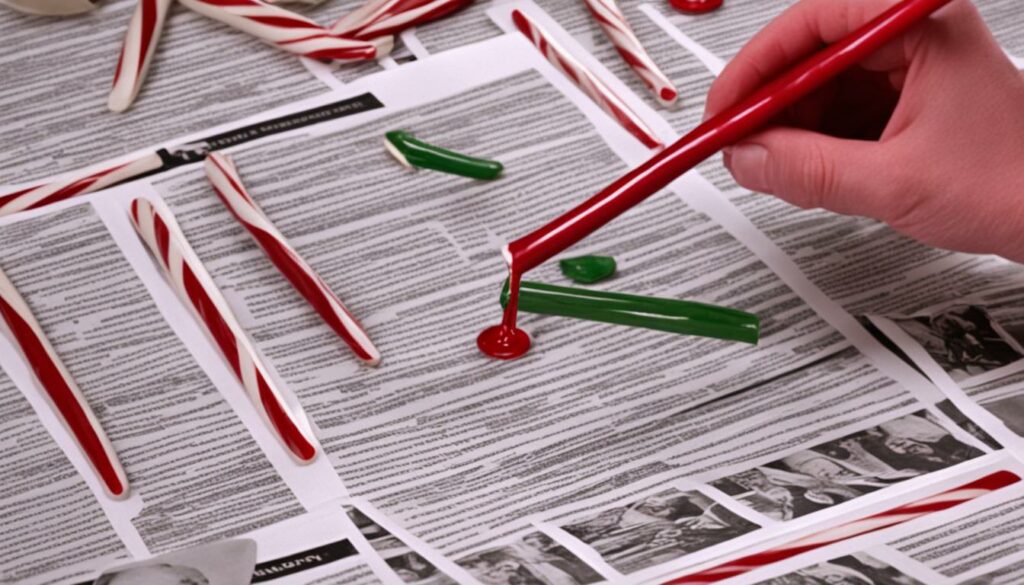
After applying the paint and allowing it to dry, your bamboo candy cane sticks will have transformed into beautiful replicas of bamboo. These sticks can now be used to enhance the festive atmosphere in your home. Place them in vases, jars, or other decorative containers, or position them against a wall or on a tabletop to create an eye-catching holiday display.
The best part about making your own candy cane sticks is that it is an inexpensive and fun project that can be done by anyone. By using simple materials and following a few steps, you can add a unique and personal touch to your holiday decor. Whether you want to create a focal point on your mantel or add a festive touch to a shelf or side table, these candy cane sticks will undoubtedly add charm and whimsy to your space.
What Kind of Candy to Use for Candy Kabobs?
When it comes to making candy kabobs, choosing the right kind of candy is crucial. We want to ensure that the candy not only looks beautiful on the skewers but also maintains its integrity throughout the process. Here are some tips on selecting the best candy for candy kabobs:
Opt for Softer Candies
Soft candies work best for candy kabobs as they are easier to skewer and won’t break or crumble when pressure is applied. Avoid hard gummies or candies that have a brittle texture, as they may not hold up well on the skewers. Instead, go for options like chewy fruit slices, gummy bears, or marshmallows.
Choose Candies with a Larger Surface Area
Candies with a larger surface area, such as gummy sharks, make it easier to insert the skewers. These candies provide a stable base and minimize the risk of them sliding off the skewers. Additionally, candies with interesting shapes or textures can add visual appeal to your candy kabobs.
Avoid Candies That Crumble or Fall Apart
It’s important to pick candies that won’t crumble or fall apart easily. Delicate candies or those with a brittle texture may not hold up well when inserted into the skewers or when consumed. Look for candies that have a more solid consistency and are less likely to break apart. Licorice pieces, Swedish Fish, or jelly beans are great options that hold their shape well.
By keeping these considerations in mind, you’ll be able to select the best candy for candy kabobs that not only look enticing but also withstand the assembling process and bring joy to those who indulge in them.

| Candy Options | Texture/Consistency | Surface Area |
|---|---|---|
| Gummy Bears | Chewy and pliable | Good surface area for skewering |
| Gummy Sharks | Chewy and flexible | Larger surface area, interesting shapes |
| Fruit Slices | Chewy and soft | Larger surface area, vibrant colors |
| Marshmallows | Soft and light | Easy to skewer, lightweight |
| Licorice Pieces | Soft and pliable | Sturdy shape, holds up well |
| Swedish Fish | Soft and chewy | Distinct fish shape, great for skewering |
Tip: A combination of different candies with varying colors, textures, and shapes will make your candy kabobs visually appealing and enjoyable to eat.
With the right candy choices, you can create delicious and visually stunning candy kabobs that will impress your guests and satisfy their sweet tooth.
Choosing the Right Stick for Candy Kabobs
When it comes to creating candy kabobs, selecting the best sticks is crucial for a successful and delightful outcome. After extensive testing and experimentation, we have found that bamboo skewers are the ideal choice for this sweet treat.
Bamboo skewers offer several advantages that make them the top choice for candy kabobs. Firstly, they are sharp, allowing for easy insertion into the candies without causing any damage or crumbling. This ensures that your kabobs stay intact and visually appealing.
Furthermore, bamboo skewers provide the necessary stability for your candy kabobs. They are strong enough to hold the weight of various candies, ensuring that your creations don’t collapse or fall apart. You can confidently arrange a wide variety of candies on the skewers without worrying about them toppling over.
To enhance the performance of your bamboo skewers, we recommend soaking them in water for approximately an hour before using them. This soaking process helps prevent the skewers from charring or burning when exposed to heat or flames. Additionally, considering spraying the skewers with a light coat of cooking oil to further prevent the candy from sticking.
So, why settle for subpar sticks when you can have the best? By choosing bamboo skewers, you can rest assured that your candy kabobs will be a hit at any event or celebration. Their sharpness, durability, and ease of use make them the perfect companion for your creative candy endeavors.
A Comparison of Stick Options for Candy Kabobs
| Stick Type | Advantages | Disadvantages |
|---|---|---|
| Bamboo Skewers | Sharp and easy to use Durable and strong Can be soaked to prevent burning |
May require pre-soaking Not suitable for larger or heavier candies |
| Wooden Popsicle Sticks | Readily available Can be decorated Inexpensive |
Not as sharp and may not easily penetrate harder candies May not be as sturdy |
| Plastic Skewers | Reusable Washable Colorful options |
May melt or deform when exposed to heat or flames Not as sharp or sturdy as bamboo |
As you can see from the comparison table, bamboo skewers outshine their alternatives when it comes to creating candy kabobs. Their unique combination of sharpness, durability, and ease of use makes them the best choice for this delightful treat. So go ahead and grab a pack of bamboo skewers, and get ready to take your candy kabobs to the next level!

Tips for Making Candy Kabobs
When it comes to making candy kabobs, there are a few tips and tricks that can take your creations to the next level. In this section, we’ll share some expert advice to help you make the most delicious and visually appealing candy kabobs.
Choose a Variety of Textures and Colors
One of the keys to creating eye-catching candy kabobs is to choose a variety of candies with different textures and colors. Mixing soft and chewy candies with crunchy ones adds a delightful contrast that enhances both the taste and visual appeal of your kabobs. So, don’t be afraid to experiment with a combination of gummy candies, marshmallows, licorice, and chocolate-covered treats to create a stunning candy display.
Place Larger, Heavier Candies at the Bottom
For a well-balanced candy kabob, it’s important to consider the weight and size of the candies. Start by placing larger and heavier candies at the bottom of your skewer. This will help anchor the kabob and prevent it from toppling over. As you work your way up, gradually decrease the size and weight of the candies to create a visually pleasing progression.
Mix Shapes, Colors, and Textures
A candy kabob is like a miniature edible work of art, so don’t be afraid to mix and match different shapes, colors, and textures. Experiment with various candy shapes, such as round, square, and novelty shapes, to add visual interest to your kabobs. Combining vibrant colors and textures will create a visually stunning display that is sure to impress.
Lay Out Candies Before Assembling
Before assembling your candy kabobs, it’s a good idea to lay out all the candies to visualize the final result. This allows you to play around with different combinations and arrangements to find the most appealing design. By carefully planning the placement of each candy, you can ensure a cohesive and aesthetically pleasing presentation.
Keep these tips in mind when making candy kabobs, and you’ll be able to create stunning, delicious treats that are sure to be a hit at any gathering.
How to Wrap Your Candy Kabobs
Now that you’ve created your delicious and eye-catching candy kabobs, it’s time to give them a professional finishing touch. Wrapping your candy kabobs in cellophane bags not only adds a polished look but also protects them and keeps them fresh for gifting or displaying.
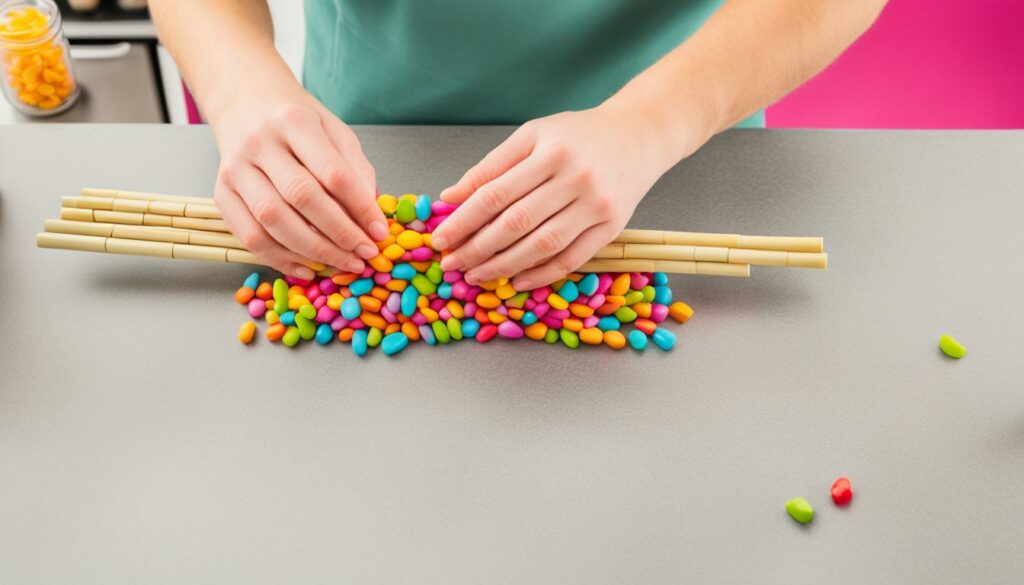
- Cut a piece of cellophane that is wide enough to wrap around the kabob and long enough to cover the entire length.
- Lay the cellophane flat on a clean surface.
- Place the candy kabob in the center of the cellophane.
- Take one side of the cellophane and bring it over the kabob, tucking it tightly underneath.
- Repeat the same process with the other side of the cellophane, ensuring that the kabob is securely wrapped.
- Using clear tape, seal the cellophane at the back to hold everything in place.
- To give it a finished look, fold the top of the cellophane like a present.
- Tie the bottom of the cellophane with a colorful ribbon or twine.
By wrapping your candy kabobs, you create a delightful and visually appealing gift that is perfect for birthdays, holidays, parties, or as a sweet treat for yourself.
Remember to store the wrapped kabobs in a cool and dry place to maintain their freshness. If you’re gifting them, consider adding a personalized tag or card to make it even more special. Your recipients will appreciate the effort and thought you put into creating these stunning and delicious treats!
Recommended Candy for Candy Kabobs
The options for candy kabobs are endless, but here are some ideas to get you started. Consider using:
- Marshmallows: The fluffy texture and sweet taste of marshmallows make them a classic choice for candy kabobs. They add a soft, pillowy element to the kabobs.
- Gummy Sharks: These shark-shaped gummies not only add a fun visual element to your kabobs, but they also have a chewy texture that complements the other candies.
- Peaches: Candied peach slices bring a burst of fruity flavor to your kabobs. They are soft and juicy, making them a delightful addition.
- Swedish Fish: These iconic gummy candies are a crowd favorite. Their vibrant colors and chewy texture make them a great choice for candy kabobs.
- Licorice Pieces: Licorice candies, whether they are black or colorful, provide a satisfying chew and add a nice contrast to other candies on the kabobs.
- Fruit Slices: Brightly colored fruit slices, such as orange, lemon, or lime, bring a refreshing citrus flavor to your kabobs. They also provide a tangy punch.
Feel free to mix and match these candy options to create unique and delicious candy kabobs. You can also explore seasonal candies to align with holiday themes. Get creative with your candy choices and have fun crafting beautiful and tasty kabobs!
| Candy | Description |
|---|---|
| Marshmallows | Soft and fluffy with a sweet taste |
| Gummy Sharks | Fun shark-shaped gummies with a chewy texture |
| Peaches | Candied peach slices for a burst of fruity flavor |
| Swedish Fish | Iconic gummy candies with vibrant colors and chewy texture |
| Licorice Pieces | Soft licorice candies in various colors for a satisfying chew |
| Fruit Slices | Brightly colored citrus-flavored slices for a tangy punch |

Conclusion
Making your own bamboo candy cane sticks and candy kabobs is an enjoyable and budget-friendly DIY project. With a few supplies and some simple steps, you can create beautiful and eco-friendly holiday decorations. Whether you’re looking to add a festive touch to your home decor or create personalized gifts, these DIY projects are incredibly easy and rewarding.



